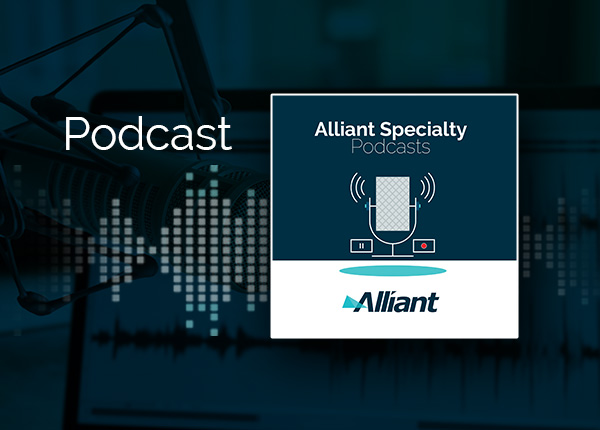What is Captive Insurance?
By Marilyn Quinlan, Seth Madnick, Jay Thebaut, Alliant
In this challenging insurance marketplace, where property rates are increasing and certain liability coverages are difficult to obtain, insureds are looking for creative ways to either transfer or finance risk. Inevitably, captives come up as an alternative to traditional insurance. This article will explain some of the elementary aspects of captives and highlight reasons as to why this solution is receiving renewed attention.
What is a captive?
A captive is a licensed insurance company wholly owned and controlled by its insured. Captives insure, reinsure and cover the risks of their owners and affiliates.
Why have a captive insurance company?
A captive insurance company provides an option for corporations, groups, and public entities to take financial control, manage risks, and underwrite their own insurance. Advantages include:
- Own and manage a portion of the insurance risk
- Share in potential underwriting profits and investment income on the business insurance
- Control risk management and claims
- Stabilize premium rates
- Directly access reinsurance markets
- Reduce dependence on commercial insurance markets
- Gain purchasing power for the participating businesses
What types of captives are available?
- Single parent captive A single parent captive has one owner, insuring the risks of the parent organization and/or its subsidiaries. It is also called a pure captive.
- Group captive A group captive is an insurance company formed and controlled by multiple organizations to insure certain risks for the member companies. A group captive can be homogenous (same industry) or heterogenous (unrelated industries).
How can you start a captive?
- Single parent captive - A captive owner funds the formation expenses, capital, and surplus.
- Group captive - Captive participants collectively fund the formation expenses, capital, and surplus.
- Rent-a-captive segregated cell (Available for either a single parent or group captive) - An arrangement in which a captive participant “rents” the captive facilities of an outside organization. This provides the benefits of a captive without the start-up costs and greater speed to market.
What do the best captives look like?
The best captive insurance companies are those created and utilized by organizations that understand their risk profile better than the traditional market does, have superior loss histories and have more robust risk management practices in place. These captives are run and operated by organizations that have the ability and knowledge to take on greater control over their risk and their risk financing. The entities also understand that it takes time and money to manage a captive. A company needs to capitalize the captive and then there are ongoing operating expenses.
What are the disadvantages to having a captive?
While a captive may look like an attractive option, there are potential downsides including:
- Potential loss of underwriting profits and investment income
- Potential loss of investment/collateral funding
- Sharing risk among business owners
- Long-term commitment
How should one get started on exploring a captive?
Talk to your broker about further education and assessment of captive viability. If a captive makes sense, Alliant will complete a Feasibility Study and help with next steps once it is determined a captive is the right option.
Alliant note and disclaimer: This document is designed to provide general information and guidance. Please note that prior to implementation your legal counsel should review all details or policy information. Alliant Insurance Services does not provide legal advice or legal opinions. If a legal opinion is needed, please seek the services of your own legal advisor or ask Alliant Insurance Services for a referral. This document is provided on an “as is” basis without any warranty of any kind. Alliant Insurance Services disclaims any liability for any loss or damage from reliance on this document.




